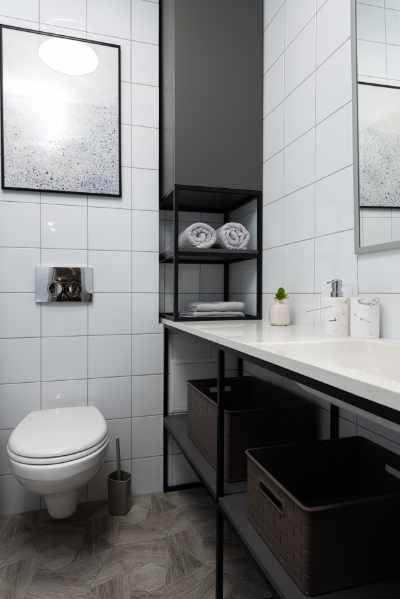It might just be that annoying noise. Or, it could be a much more significant problem that would lead to major repairs. In this piece, we’re going to cover the bases on how to fix a running toilet in your home.

You may not be selling your home, but you just want things to work properly. A running toilet can cause damage to your home—mold damage caused by condensation is a perfect example. What causes a toilet to run overly much is likely water quality issues or internal parts of the toilet failing.
Before you can get to the bottom of things, you need to understand exactly what’s causing your toilet running day in and out. Read on for some tips on how to fix a running toilet and keep your water bills down.
Common Causes of a Running Toilet
Consider the following reasons to know what might be causing a running toilet:
- Drying agent residue in the tank
- Worn out flapper valve
- Cracks in the toilet tank and bowl walls
- Overflowing from a blocked sewer line or overflowing from a broken sewer line.
Managing the Water Supply
As you’re working to fix a running toilet, be aware of the water supply. Depending on what you’re working on, you may want it on or you may want it off. The first go around you may just keep it on to test what’s happening inside the tank. Just be aware if water starts to pour onto the floor that you can quickly shut off the water by closing the water supply valve.
Loose or Broken Flapper
If your toilet is running, there are a few common causes. The first thing to check is the flapper. It is the small rubber flap at the bottom of the tank. It is held shut by a chain that connects to an arm in the tank. The flapper may have become loose or broken off from the chain.
High Water Level
A high water level in the tank can lead to a toilet running all the time. If you feel the water level in your tank is too high, you can take out the stopper and try to pour out some of the water. However, if the water level is still too high, you should call a plumber, as it may mean there is a bigger problem at hand.
Fixing Weak Flush
Clogged holes beneath the bowl’s rim are the most common cause of a slow-emptying bowl, often known as a poor flush. To remove away any dirt, carefully poke each flush hole with a bent piece of wire.
A little mirror will let you see beneath the rim, and coat-hanger wire will work perfectly. You may also use wire to clear dirt from the base of the drain’s siphon jet. Don’t scratch the bowl with your fingers.
Internal Leaks
To check whether there are any leaks within the tank, shut off the water. Remove the lid to the tank and see if you can identify any small pinholes. They might be very small. If you have one or more, use plumbers’ tape to seal up any gaps or leaks you’ve found. Drilling should not be required.
Finalizing
If you are still struggling with the toilet running endlessly, then the issue might be severe. In that case, it is important to get in touch with a professional plumber or call and ask for their advice. As with the proper treatment of the issue, you might also help the environment while saving water.
Bonus! Fixing Faucet Leaks
Sometimes it’s not the toilet that’s the problem. Do you have a leaky faucet? You’re in luck, here’s some help for that too!
If you want to fix the leak at its source, you should first identify the type of faucet you have. There are two common types of faucets, compression faucets, and cartridge faucets.
Compression Faucets: These are a more traditional design. The water comes in at low, constant pressure; then, it shoots out like a jet (or stream).
Cartridge Faucet: If you have a cartridge faucet, the water shoots out much more slowly (this is the trend for toilet hardware).
If you have a toilet with both types of faucets, you should increase the water flow coming in to ensure it’s always at a constant flow. This is more of a preference than anything, but the higher the water flow, the more ensure it goes back to a constant flow once you turn off the water.
Repairing a Slow Drain with Vinegar and Baking Soda
For a safer solution, you can use two common home ingredients to unclog a blocked sink or drain: baking soda and vinegar. Put half a cup of baking soda down the drain first to help eliminate any debris. Then pour half a cup of vinegar down the drain to neutralize the baking soda.
If the issue persists you may try a store-bought drain cleaner or you may need to hire a plumber. Hope this information has been helpful to you!



